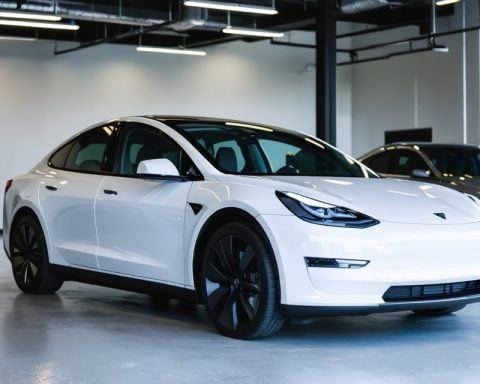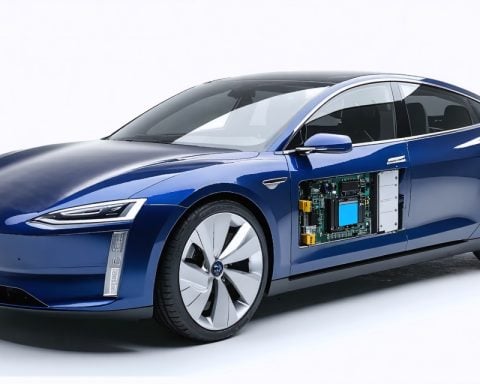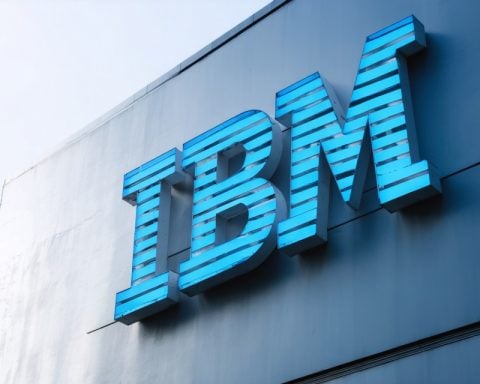Transforming India’s Transportation Landscape
Today marks a significant milestone as Prime Minister Modi officially inaugurates the Bharat Mobility Global Expo 2025. This event showcases cutting-edge advancements and transforms the transportation sector in India, focusing on sustainable and efficient mobility solutions.
The expo brings together a wide array of industry leaders, innovators, and government officials, all united by a common goal of revolutionizing transportation. Attendees will explore the latest technologies, including electric vehicles, smart transportation systems, and innovative infrastructural designs.
With a commitment to a greener future, the exhibition highlights India’s vision towards sustainable mobility. Various stakeholders are expected to discuss collaborative strategies that can propel the country toward eco-friendly transportation solutions. Furthermore, seminars and discussions will delve into challenges faced in this sector and how to tackle them effectively.
PM Modi’s participation underscores the government’s dedication to advancing India’s infrastructure and mobility framework, ensuring that the nation stays at the forefront of technological advancements. As the global spotlight shifts to India, this event symbolizes the country’s potential to emerge as a leader in sustainable mobility.
This Expo serves not just as a platform for businesses but also as a beacon of hope for a cleaner, more efficient future in transportation. The innovations unveiled here will pave the way for transformative changes in how people and goods move across India.
Expanding Horizons: The Implications of India’s Transportation Revolution
The inauguration of the Bharat Mobility Global Expo 2025 marks a pivotal moment for India’s transportation sector, which extends far beyond national borders. The embrace of sustainable mobility solutions could set a precedent for emerging economies, inspiring shifts in societal norms around transportation and urban planning globally. As India’s innovations take center stage, they contribute to an international dialogue on climate action, pushing for more robust policies in place to combat urban congestion and pollution.
The potential environmental impacts are profound—as electric vehicles and smart systems gain traction, local air quality could improve dramatically, mitigating health issues linked to pollution. The event’s challenge is to move these solutions from prototype to widespread implementation, ensuring that the economic benefits reach all strata of society.
Looking forward, trends suggest a transition toward integrative transport systems, combining various modes of transit to create seamless connectivity. This is not merely an economic imperative but a cultural shift, fostering a community approach to mobility. As these systems proliferate, urban centers might evolve into greener, more vibrant spaces that prioritize people over vehicles.
In the long term, India’s advancements in transportation could catalyze a global movement towards sustainable development, aligning with the United Nations’ Sustainable Development Goals. Ultimately, the innovations inspired by the Bharat Mobility Global Expo are more than technological; they signal a commitment to a sustainable future that prioritizes collective well-being and environmental stewardship.
Revolutionizing Indian Transportation: Insights from the Bharat Mobility Global Expo 2025
India’s transportation sector is on the brink of a monumental transformation, as evidenced by the recent Bharat Mobility Global Expo 2025, inaugurated by Prime Minister Modi. This event is not merely an exhibition; it signifies a pivotal moment for sustainable and innovative mobility solutions across the nation. Here’s an in-depth look at what this expo signifies, featuring insights on trends, innovations, and the future of transportation in India.
Key Innovations on Display
At the Bharat Mobility Global Expo 2025, leading industry experts are showcasing groundbreaking technologies that promise to redefine transportation in India. Highlights include:
– Electric Vehicles (EVs): The expo features a robust array of electric vehicles, emphasizing their role in decreasing carbon footprints and promoting cleaner air in urban areas.
– Smart Transportation Systems: Intelligent traffic management solutions and apps are being introduced to enhance the efficiency of urban mobility and reduce congestion.
– Advanced Infrastructure Design: Innovative engineering solutions are essential to support these new technologies and ensure a seamless integration with existing systems.
Pros and Cons of Embracing Sustainable Mobility
Pros:
– Environmental Benefits: A clear reduction in greenhouse gas emissions and pollution levels through the adoption of green technologies.
– Economic Growth: Investment in sustainable mobility can drive job creation and foster local industries.
– Enhanced Accessibility: Improved public transport systems can make mobility inclusive for all segments of society.
Cons:
– High Initial Investment: Transitioning to new technologies could require significant upfront costs.
– Urban Planning Challenges: There may be difficulties in retrofitting existing infrastructure to accommodate new mobility solutions.
– Market Adaptation: Industries reliant on fossil fuels could face disruptions during the transition period.
Current Market Trends
As the global focus intensifies on climate change and sustainable practices, India’s transportation sector is witnessing a paradigm shift. Notable trends include:
– Government Incentives: The Indian government is introducing subsidies and financial aids to promote the adoption of electric vehicles and smart public transport.
– Public-Private Partnerships: Collaborations between private firms and government agencies are fundings key projects aimed at developing sustainable mobility frameworks.
– Rising Consumer Awareness: As more consumers prioritize sustainability, demand for eco-friendly transportation options is surging.
Challenges and Future Predictions
While India exhibits immense potential in revolutionizing its transportation sector, significant challenges lie ahead. Some of these include:
– Technological Gaps: Bridging the technological divide between urban and rural areas is crucial for inclusive progress.
– Infrastructure Limitations: Existing infrastructure may need substantial upgrades to support new technologies effectively.
Predictions suggest that by 2030, India could see a substantial increase in the penetration of electric vehicles, potentially reaching sales of over 30% of total vehicle sales.
Conclusion
The Bharat Mobility Global Expo 2025 is a testament to India’s commitment to reshaping its transportation landscape towards a more sustainable future. As innovations and collaborative efforts unfold, India stands poised to lead the charge in eco-friendly mobility solutions.
For more insights on sustainable transport initiatives, visit india.gov.in.












